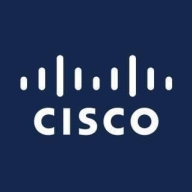

Cisco Meraki Wireless LAN and Juniper Mist Wireless Access Points are prominent solutions in wireless networking. Juniper Mist appears to have the upper hand due to its superior features and performance.
Features: Cisco Meraki provides excellent centralized management through a cloud-based dashboard, integrating with APs, routers, and switches, which is highly beneficial for small IT teams. It offers robust security with Layer 7 protections and ease of use. Juniper Mist emphasizes AI-driven insights using tools like Marvis and WAN assurance for comprehensive network oversight, automated troubleshooting, and dynamic packet capture, which offers advanced diagnostics and policy control.
Room for Improvement: Cisco Meraki could improve advanced routing, radio customization, and enterprise-level logging features. Enhancements for GDPR compliance and template configurations for MSPs are also desired. Juniper Mist could refine its support services, adjust pricing strategies, and improve third-party integrations. Users have requested more AI features for better security and connectivity reliability.
Ease of Deployment and Customer Service: Cisco Meraki is recognized for its ease of deployment across cloud environments. Customer service experiences vary, with some delays reported. Juniper Mist provides similar deployment flexibility with generally strong customer service, although some users mention a need for streamlined support processes.
Pricing and ROI: Cisco Meraki's license-based pricing requires annual renewal, which some find high. However, the pricing reflects the brand's stability and potential for high ROI through streamlined management. Juniper Mist is sometimes seen as more reasonably priced, offering solid ROI with its advanced functionalities, particularly in environments needing AI-driven insights.
I would rate Cisco support a 10, as the response time and process via the dashboard are easy, and response times are always within the SLA.
It would be better if the SLA of technical support was less than four hours.
My impression of Juniper support is generally good, and I would rate it probably a 9.
Technical support is very good.
Meraki is not scalable enough since it straightforwardly maps its products to segmented specifications.
The cloud, which operates on Amazon Web Services (AWS), can support unlimited access points.
It's built for larger environments.
We have experienced many instances where we have experienced a lag in our network, and I am not sure if it is due to their devices or our network.
Stability is not an issue for me because it comes with Cisco's proven manufacturer quality.
The most important improvement needed is to eliminate the limitation of uplinks.
Some of the newer models of the Cisco Meraki Wireless LAN access point have encompassed the new wireless protocols and increased the strength of their antennas.
Juniper products are still coming to market, HP offers its own access point range, which competes with Juniper's premium Mist access points intended for enterprise customers.
I suggest that the AI tool in the Juniper Mist Wireless Access Points needs to be a little bit more ChatGPT-like, allowing easier communication in normal language instead of requiring specific prompts.
The reporting logs require improvement in terms of clarity.
Cisco Meraki Wireless LAN is on par with other devices in that category, offering competitive pricing.
The pricing of Cisco Meraki Wireless LAN is not competitive enough for the SMB market compared to other brands.
My experience with the pricing of Cisco Meraki Wireless LAN is that it is competitive with other providers offering paid subscriptions.
Regarding pricing, Juniper's cost rates as a seven on a scale where one represents a high price and ten represents a low price.
The price is very high, which is why not all enterprises can purchase this product.
Juniper Mist is cheaper than Meraki, placing it in the middle of the pack.
Cisco Meraki Wireless LAN has helped optimize network traffic very effectively, as we do prioritization for streaming and web conferencing apps, resulting in a clear, visible improvement in performance.
It also manages security clients and switches, providing a single dashboard to manage multiple network infrastructures.
The ability to program all access points from the Cisco Meraki Wireless LAN dashboard, view the status of all of them, and examine the individual devices connected to each access point is very valuable.
I have gained valuable insights from the Mist Cloud's analytics and network insights, as it tells you a lot of things, including details about Microsoft Teams calls, identifying which calls were good or bad, and correlating that to the client's signal and which access point the client was connected to at the time.
From my perspective, the Juniper reporting logs are clear and provide necessary data, which supports better management and diagnosis.
It's a cloud solution with Mist, which helps troubleshoot and provides visibility to look at different access points.
| Product | Market Share (%) |
|---|---|
| Cisco Meraki Wireless LAN | 11.1% |
| Juniper Mist Wireless Access Points | 5.5% |
| Other | 83.4% |


| Company Size | Count |
|---|---|
| Small Business | 69 |
| Midsize Enterprise | 26 |
| Large Enterprise | 31 |
| Company Size | Count |
|---|---|
| Small Business | 11 |
| Midsize Enterprise | 4 |
| Large Enterprise | 8 |
Juniper Wireless Access Points work in conjunction with Juniper Mist Cloud Services and Mist AI to deliver premier wireless access capabilities. The Juniper Mist Edge extends microservices to the campus to bring agility and scale while enabling new applications at the edge.
We monitor all Wireless LAN reviews to prevent fraudulent reviews and keep review quality high. We do not post reviews by company employees or direct competitors. We validate each review for authenticity via cross-reference with LinkedIn, and personal follow-up with the reviewer when necessary.